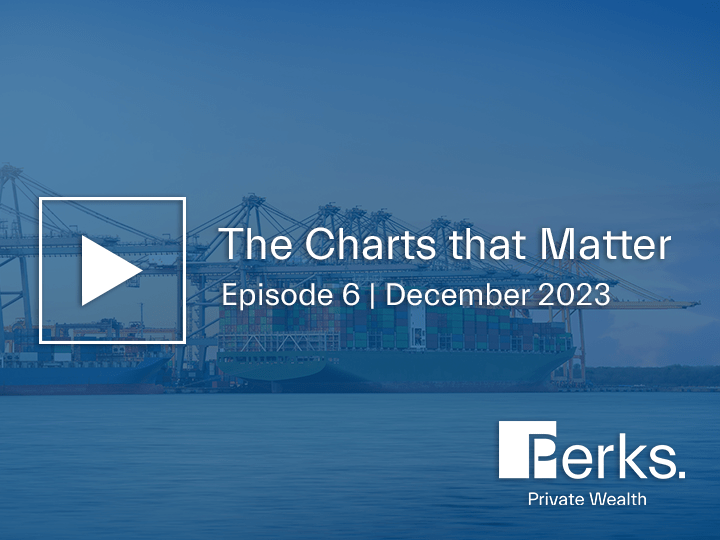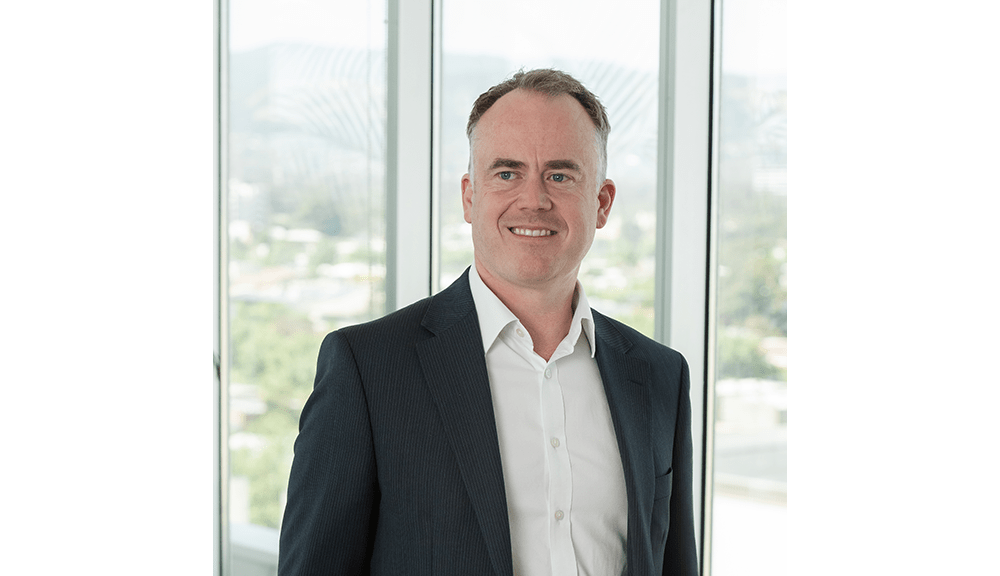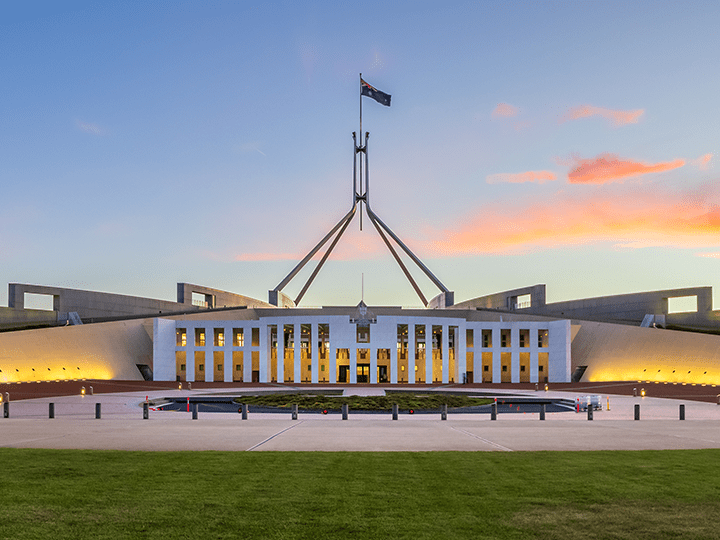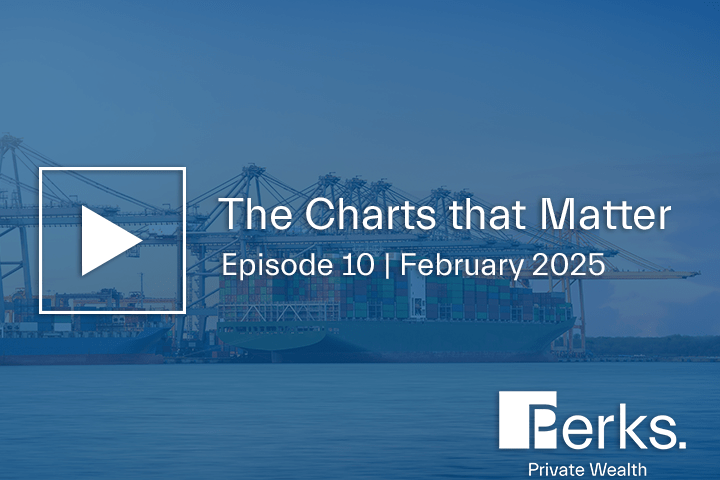Simon
Hi, everyone. My name is Simon Hele, Director of Perks Private Wealth.
And I’m pleased to welcome you to another edition of the Charts that Matter. As always, I’m joined by Christo Hall, Chair of our Investment Committee.
Today, I’m going to discuss with him our investment committee’s thoughts and views on markets, what’s happened, where are we now, and how we see things play out. Welcome, Christo.
Christo
Thanks, Simon. Good to be here.
Simon
Christo, yet, again, we saw the RBA lift interest rates on Melbourne Cup day. Many thought we might have been at the peak of the rates after the June rate rise. How close are we to the peak?
Christo
Yeah, good question, Simon. Before I answer that, I’m just going to unpack what’s happening with the inflationary story to lead us to the conclusion that we’re thinking at the moment. So inflation is coming down.
That’s the good message, particularly in the US. The US is unwinding at a far rapid rate than Australia. So if you look at where the inflation rate sits in the US, it’s now closer to 3.5%.
Whereas, if we look at where we are in Australia, we’re just under 6%. And we’re lagging behind the US with that inflation unwind by around about six to nine months. So we’ll certainly follow the US, but there is certainly going to take some time before we catch up to the US, as far as where our inflation settles down.
And that has, obviously, a bearing as to where interest rates will be. A key indicator we look at is what we call the 10-year to two-year interest rate spread. And that says a lot about the economy and where we are in the cycle.
So if you think about where we are right now, the two-year, 10-year spread has been telling us that we are going into recession.
And that curve, which you can see on your screen, normally is a lead indicator for 12 to 18 months out.
So at the last IC meeting and the one before that, it was at, what we call, a negative slope, a negative spread. And that is indicating, basically, that we are going to go into recession, which we will. But think it will be mild.
What is happening now is that that curve is now starting to flatten. So the spreads are closing.
And that is saying that we will come out of recession. And we’re going to enter into a slow growth phase, which is important because it means that we’re coming through the worst of all of this that we’ve been under for the last 12 months.
And a key indicator of not just what’s going on in the US and Australia, but globally, with inflation coming down, is what central banks are doing. And that’s really important. Because if you look at the number of central banks cutting rates now as opposed to putting rates up, there’s a far higher proportion that are now starting to cut rates.
So this is not just a US and Australian phenomenon, it’s a global phenomenon. So we’re entering into this rate easing cycle as the rate rises start to bite now and, obviously, slow economic growth and get inflation under control.
So in answer to your question, Simon, we are definitely, in my opinion, at the top of the rate rise cycle in the US. And we think rates will peak there. We may see one more rate rise in Australia before we start heading down.
It’s important to note that one of the issues that we’ve been lagging the US is that rental market here is so tight. And if you look at how much rents have gone up in Australia over the last year, it’s just under 8% And you can’t just alleviate that by adding new housing supply quickly. It takes time to be able to do that.
But it will happen. And that will help.
So in summary, importantly, we see the US beginning their rate-cutting cycle around middle of next year. But Australia, because of that lag time that I mentioned, that six- to nine-month lag time, we will not begin our rate-cutting cycle till the first quarter of 2025, so around about February or March.
Simon
It’s really interesting to hear you explain the business cycle like that and using the 10-year, 2-year spreads as an indication of where we are at in the cycle. You talked about being in a slow growth phase, what are the indicators showing about that?
Christo
Yeah. And that’s a good question, Simon. And I think if you look at some of the other indicators, there is definitely still a risk of recession. And I think that we will be going into a very moderate recession if we do at all.
But the probability of falling to recession with some indicators that we look at is actually declining. It’s still there, but it’s declining. And that’s important to note.
And what also supports that is the economic surprise index, which is a lead indicator of, basically, economic recovery.
It’s starting to stabilise. And it’s not as problematic as it was going back three to six months ago. So there’s definitely signs of stabilisation there, which gives us greater confidence that we’re not going to head into a deep recession, either here or globally.
And real GDP in the Australian economy is going to continue to soften. But we’ll talk about this later on in the video. But China has had some significant announcements, which, I think, are going to help cushion us from any further medium slow down from here.
Simon
You just mentioned China. Clearly, that plays a role in the prospects for the Australian economy. When we last caught up, you talked about China being quite challenging at the moment. Where does that sit on the overall scheme?
Christo
Good question. So we’ve had a pretty significant development since the last video.
We’ve seen a significant stimulus package announced by the Chinese government around about four weeks ago.
And essentially, it’s a revision to the–
it came out through revision of the budget forecasts. And that’s a very rare occurrence. It’s only happened three times since 1998.
But to put it into context, it was around about $1 trillion, sorry, a trillion Renminbi, RMB, worth of stimulus, which is predominantly going to be directed at infrastructure spending. And it’s going to happen quite quickly. That spend is going to be in two tranches, 500 billion renminbi in the first six months, and then 500 billion renminbi thereafter.
And that’s really important because what that will do is, it will lift economic growth back towards a more satisfactory level of around about 5% in China. So that slowdown that we’re expecting, that significant slowdown, I think, will not occur to the degree that we were thinking because of that stimulus. And that’s going to have some implications for Australia in a positive way, given how reliant Australia is on the Chinese economy for our own economic growth.
Simon
– Thanks, Christo. That’s been incredibly insightful. We always like to finish these chats by asking you to look into the crystal ball. Can you talk about the markets?
What does all the economic data mean for our investments? And where do you see the opportunities as we look forward?
Christo
– Thanks, Simon.
Yeah, happy to do that. I think it’s just worth reflecting on 2023 and what’s happened in markets. And you know what we were saying 12 months ago. And we’re at today–
and it’s been very interesting. We were saying, 12 months ago that it was going to be volatile throughout 2023. And that’s certainly been the case across multiple asset groups and that the cash would have a relatively good period of outperformance, which it has done.
And if you look at the equity markets, that is also certainly the case, if you remove what we call the Magnificent Seven, which are all the big tech stocks in the US. And it’s worth noting that those stocks have contributed around about 85% of performance of the S&P this year.
The market’s have been pretty much flat, which is what we were saying. So that’s been a really interesting observation and was in line with our expectations. So yeah, market capital on what we call an equal weighted basis for the markets has been flat as an outcome.
What we’re seeing into 2024 is some opportunities begin to really present themselves, getting back to your question. And that’s particularly the case with small caps versus large caps. Now, we’ve had a very strong period of outperformance by the large cap stocks because we’ve been a very defensive market because of all the economic uncertainty that’s been pervading over the last 12 months.
Those valuations have now reached extreme levels. So if you look at the valuation gap between small caps and large caps, they are at their lowest they’ve been around about 25 years. So I see that as an area of focus for 2024, which we’ll be watching very, very closely. That’s a very, very meaningful valuation gap, given where we are moving to in the economic cycle.
The other important point is that we’re still very optimistic on income.
And we’ve been saying this for the last 12 months. And it’s been very, very volatile. But we started to see some real improvement in returns from fixed interest. And I expect that to continue as we move through 2024.
And that’s going to be both in domestic and global bonds. But also, there are going to be some great opportunities still in private credit as we start to move into a recovery phase.
And some of those assets, to me, potentially look mispriced. So that’ll be another area of focus there.
And the final area of focus for me, which leads into the China narrative, around Chinese economic growth stabilising and improving because of the stimulus, and that’s been driven by what we think will be improving commodity prices, is that linkage to our currency.
So I think the Australian dollar is absolutely worth watching here for a recovery. It’s been sold off fairly heavily over the last 12 months. But we’re very mindful of where that sits at the moment. And that will be something we want to consider from a hedging perspective for our clients.
So in summing up, Simon, we’ve talked about some tactical aspects that we’re looking at to take advantage of in the market. But i think, more broadly, as to be shown from the table below, the markets are going to be quite directionless still for a period, probably for the next six months. So the key message is that you really want to stay diversified, well diversified, particularly during that period.
And obviously, we take a long-term view with our asset allocation for our clients. But it’s going to be a period, once we get through that, of going through a more normalised cycle. So we’re very much looking forward to how 2024 pans out.
Simon
Thanks, Christo. And thanks, everyone, for joining us for this edition of The Charts that Matter.








